Matt Spicer Ingrid Goes West Interview
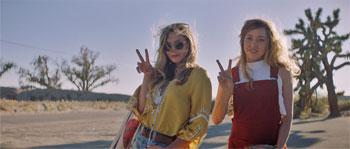
A Conversation With Writer/Director Matt Spicer
Cast: Audrey Plaza, Elizabeth Olsen
Director: Matt Spicer
Genre: Comedy, Drama
Running Time: 97 minutes
Synopsis: Ingrid Thorburn (Aubrey Plaza) is an unhinged social media stalker with a history of confusing 'likes" for meaningful relationships. Taylor Sloane (Elizabeth Olsen) is an Instagram-famous 'influencer" whose perfectly curated, boho-chic lifestyle becomes Ingrid's latest obsession. When Ingrid moves to LA and manages to insinuate herself into the social media star's life, their relationship quickly goes from #BFF to #WTF.
Built around a brilliantly disarming performance from Aubrey Plaza, Ingrid Goes West (winner of the Waldo Salt Screenwriting Award at Sundance) is a savagely hilarious dark comedy that satirizes the modern world of social media and proves that being #perfect isn't all it's cracked up to be.
Ingrid Goes West
Release Date: October 26th, 2017
Trailer
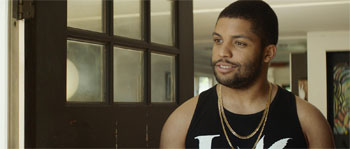 Interview with Matt Spicer
Interview with Matt Spicer
Question: How did this project originate?
Matt Spicer: My co-writer David Branson Smith and I have been friends for many years and were looking for something to work on together. We were having lunch and talking about our mutual obsession with Instagram and how it brings out the worst in us, making us feel bad about ourselves, while also being wildly entertaining and addictive. He asked me if I thought there was a movie there, which I did. The obvious choice was to make a Single White Female for the social-media generation, with Taylor as the helpless victim and Ingrid as the obsessive, cold-blooded stalker. But the more we talked about it, I actually found myself relating more to the Ingrid character. After all, wasn't Taylor the one who had put her life out there in the first place? Haven't we all had moments when we've looked at a picture of someone else and wished we could have what they have? Before we wrote it, we talked about other movies we'd both loved " The King Of Comedy, The Talented Mr. Ripley " which are stories about obsessives, and people on the outside trying to get in somewhere. Ingrid Goes West grew out of our love for those stories, but we also wanted to do something contemporary and universal. Whether you're using Instagram to keep tabs on one of your exes or staring enviously at a co-worker's vacation photos, I feel like there's a little bit of Ingrid in all of us.
Question: why did you choose Los Angeles for your setting?
Matt Spicer: This movie was our way of confronting our own conflicting feels about social media while poking fun at our generation and L.A. culture in particular. I'm not from L.A. originally but it's my home now and I love it " but it's very easy to lose yourself here if you're not careful. Like Ingrid, I've had plenty of moments where I've felt like I had to act a certain way to get people to like me, so part of it is a satire of myself as much as the city. I eat avocado toast at Grateful Kitchen and Café Gratitude, and I live in Los Feliz and run into people like Taylor and her crowd all the time, so I'm as guilty of a lot of this behavior as anybody. Part of it came from wanting to excavate that and figure out why it was funny. More specifically, we wanted to satirize Instagram culture because it's such a big part of L.A. Most of the Instagram captions we use in the movie we actually found on the platform. There's also this performative aspect to both Instagram and living in Los Angeles " it's a tribal kind of thing, where people start speaking the same language, like 'hashtag blessed" or "It's the best!" I wanted to harness all of that and put it on film.
Question: Discuss developing your characters. What makes them tick?
Matt Spicer: All the characters in Ingrid Goes West represent different sides of ourselves " Ingrid represents this needy side, the desire to constantly fit in, the feeling that you're not good enough and the yearning to become something or someone else. Taylor represents the flip-side of that coin, someone who has everything together and seemingly has the perfect life. The best analogy is the senior in high school who has a ton of freshmen following her around " all these minions who think she's the coolest. You start to play to play that up, or buy into it. Most of us have looked up to a Taylor figure in our lives, whether in high school or elsewhere. We ask ourselves, how can I be more like that person? Taylor's boyfriend Ezra is this curmudgeon who thinks technology is bad, that we should all unplug and be more present and guard our privacy by not sharing anything " he's this pure artist and there's a pretentiousness to him we wanted to capture. It was important to us to create characters that weren't one-note; we wanted everybody to have two sides. Even Taylor's brother Nicky is more than meets the eye " he represents chaos and wants to fuck shit up, but he also sees through Ingrid immediately and knows that she's somewhat of a con artist who is obsessed with her sister. He's the one person in the movie who understands what's really going on, but he's a complete asshole. O'Shea's character Dan Pinto represents my own coming to Los Angeles and wanting to tell stories " I wanted to capture the purity in that through his character. He's genuine and owns who he is; he's not trying to be someone he's not. We needed someone like that to be our kind of moral center.
Question: What do all these characters have in common?
Matt Spicer: It's this idea that we're all wrestling with the same demons and dealing with the same insecurities. Some people are just better at masking it than others, whether they have more money or connections, or better taste, or maybe they've stolen it or cultivated it from the right people. Taylor, for instance, is better than Ingrid at hiding who she really is; Ingrid's version of Taylor is a little rougher around the edges " she's not quite pulling it off and Nicky can see through it. Ingrid represents all of our worst instincts when it comes to social media. Taylor, on the other hand, doesn't want to see through it " she's happy to have this sidekick who looks up to her and tells her how cool and smart she is. You start the movie thinking they're polar opposites but at the end you hopefully come to realize that they're the same.
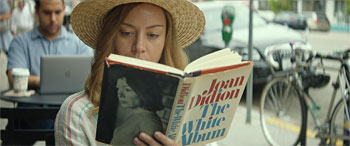 Question: Describe the casting of the main characters, and what the dynamic was like between Elizabeth Olson and Aubrey Plaza.
Question: Describe the casting of the main characters, and what the dynamic was like between Elizabeth Olson and Aubrey Plaza. Matt Spicer: Lizzie grew up in a world that's similar to Taylor's " she's done the magazine spreads, she grew up around her famous sisters, so casting her was an interesting way to incorporate her real-life persona but also do something she's never done before as an actress. I'm a huge fan of her work, so I was interested in seeing what she would do with a more comedic role, and Aubrey was too. When I first met Lizzie and asked her how she liked to work, she told me preparation was everything " she likes to know what's going on at all times and she arrives on set knowing her lines front to back. Aubrey, on the other hand, isn't a fan of rehearsal and loves doing improv, so every take is different with her. I honestly didn't know if it was going to work. We were essentially throwing Lizzie into the deep end of the pool and telling her to swim but she's such a pro that she picked it up right away. Their different acting styles made them play off of each other in a great way and by the end of it Lizzie loved doing improv. It got to the point where I'd have to try and rein them both in and get them to say the lines as scripted.
Question: Aubrey typically plays blasé, ambivalent characters but Ingrid is overtly troubled here " we come to see the humanity in her vulnerability. What made you think she could pull off this delicate balance?
Matt Spicer: I didn't write the script with Aubrey in mind. We had a short list of actors we thought could play Ingrid but we never thought we'd be able to get someone like Aubrey, even though I've always seen her as someone with great taste who makes interesting choices. But then she read the script and liked it and after I spoke with her about it, I really felt like she understood the character and was excited by the challenge of doing something she hadn't done before. It was scary for me because it was my first feature " she was trusting me to pull off what I said I would pull off and I was trusting her to do what she needed to do as an actor. We both knew the script was funny but we wanted it to feel authentic too. She was constantly steering the conversation in the direction of 'How can we make this more real?" and looking for ways to ground the character so that Ingrid would come across as a real person, which gave me a lot of comfort knowing that her head was in the right place. We didn't want the audience to be laughing at someone who was clearly suffering from a mental illness. Regardless of how they might feel about Ingrid at the beginning, by the end of the film we want the audience to be on her side and really understand where she's coming from.
Question: Is there a dark side to social media, in your opinion?
Matt Spicer: Social media can connect us with one another and make us feel less alone in the world and I think that's a good thing, but we were careful not to make this a cautionary tale about the dangers of social media. I was feeling very disillusioned after the election and it made me feel better to scroll through my Instagram feed and see how many people felt the same way I did. But being more connected also means there are more opportunities to compare ourselves to others, which can make us feel inadequate or isolated. It allows us to indulge our worst instincts on a whim, often anonymously and with no repercussions. The truth is, we all curate our own lives to some degree. Some people are just better at papering over the cracks than others. The real danger comes from our obsession with perfection and our tendency to turn our Instagram feeds into commercials for our own lives. In "Portlandia," Carrie Brownstein's character refers to this as "cropping out all the sadness." I think most of us have a version of ourselves that we present to the public and a version that we keep private " the side of ourselves we'd rather not share because it's too painful or embarrassing. But when we hide our imperfections because we're afraid of being rejected, we're actually cutting ourselves off from the people around us. Ultimately, it's our flaws that make us human and allow us to truly connect with others.
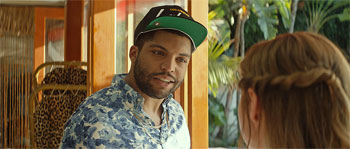 Question: Finding empathy in characters who are dark, flawed and mentally ill is hard to pull off as a storyteller. How do you do it?
Question: Finding empathy in characters who are dark, flawed and mentally ill is hard to pull off as a storyteller. How do you do it? Matt Spicer: I think George Lucas said that you can make any character unlikable by having them kick a cat, and you can make any character likable by having them save the cat, but I prefer characters that aren't so black-and-white because it feels more like real life. There are people I love who maybe aren't the nicest people in the world, but I still love them. And I think as an artist it comes down to finding the vulnerability in people like that. Where does someone's pain come from? Why are they lashing out and what's the psychology behind that? These are fascinating questions that play out in movies I love by Mike White (Chuck & Buck, Enlightened), Wes Anderson and others. Lovable assholes are their bread and butter. In Rushmore, the kid is an asshole and a narcissist from the first scene in the movie but over the course of the story we come to see what drives him; by the end of the movie we not only love this character but we are him, we've all been him at some point. I love the process of finding the humanity in this type of character. If I didn't end up becoming a filmmaker my backup plan was to become a psychologist.
Question: This is a comedy but it's also dark and disturbing at times. How did you juggle the tone?
Matt Spicer: We had a tone in mind that we wanted to achieve, and it goes back to movies I love that straddle that line, where you're laughing but also feeling heavy emotions from one minute to the next. I wish I could say that we nailed it on the first try, but that wasn't the case. A lot of finding the tone emerged through the editing process and a lot of material we found funny in the editing room didn't come across as funny in the context of the story. We were constantly having to ask ourselves is this a laugh that we want? In other words, is it a cheap laugh or is it a laugh deriving from character, which feels like it's coming from a more authentic place? With the first cut you try and throw everything in the pot, then you screen it for friends and family and see how it plays to an audience. We did a lot of these informal screenings with people we trust creatively and used their reactions to help guide us through the editing process. It becomes really apparent which laughs are working and which are falling flat. You can feel when the audience is wanting something a bit deeper. Sometimes we went too dark and serious and realized we needed a laugh, so we'd add something in to balance it out. You don't always know what you have, tone-wise, until you sit and watch it with an audience and hear them react and then talk about it with them afterwards. It's definitely a process.
Question: Were you trying to make a generational statement on the millennials?
Matt Spicer: We really wanted the movie to be timeless even though the setting was modern day. Social media, Millennials " that's all just window dressing as far as I'm concerned. You could write a version of this movie set in medieval times and it would look a lot different and certain plot mechanics would have to be changed but my hope is that the truth would still shine through. I think poking fun at my generation and the stuff we encounter on a day-to-day basis, the people and characters we come across, that's what made it funny and contemporary " excavating and examining our own lives and experiences, things we've rolled our eyes at or tried to give meaning to. But it's not meant to be an indictment or some kind of angry screed. We tried to go a bit deeper than just telling Millennials to get off their phones.
Question: Discuss some of the challenges in telling stories set in the world of social media and digital technology.
Matt Spicer: We had a whole debate about how we should portray text messaging in the movie. Our approach was, why should it be any different from showing a phone call, or depicting someone reading a book? The tendency now in movies is to show text messages directly on the screen, popping up as an animation, which ends up taking me out of the story. We wanted to point the camera directly at the phone's screen. But this decision was more difficult than we thought, especially considering the lenses we used in production. We had to hold the phones still while we got the cameras focused, and then there were little quirks like reflections on the screens while we were shooting. It became a headache to do it this way, but the benefit is it doesn't take you out of the movie while you're watching it. The other battle was whether to use Instagram directly in the story or create our own fictional platform, like Friend-a-Gram or something. I was adamant that we had to use Instagram in keeping with the spirit of authenticity because I wanted it to feel like the story was taking place in reality and not some alternate world. The problem was, the developers are constantly updating the app, so while we were shooting the film new features were suddenly added, which created matching problems in post-production. One of the hard parts of depicting technology in movies is keeping up with how quickly it changes.
Question: How do you use social media in your everyday life?
Matt Spicer: I struggle with my addiction to social media as much as anyone else. It's usually one of the first things I look at in the morning and the last thing I look at before I go to sleep. I'll catch myself reaching for it whenever I have a minute or two of downtime, whether I'm waiting in line for something or feeling awkward at a party. I've become obsessed with meme culture in particular. Sometimes I think that if Instagram had been around when I was in high school, I'd still be living in my mom's basement just looking at memes all day.
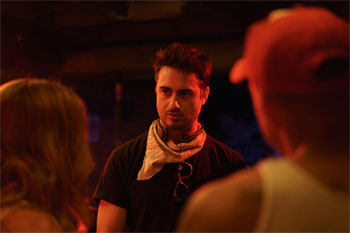 Question: How would you describe the look and feel of Ingrid goes west in terms of the camera work?
Question: How would you describe the look and feel of Ingrid goes west in terms of the camera work? Matt Spicer: Our DP (Director of Photography) Bryce Fortner had just finished shooting a TV series and we were discussing some of the major differences between shooting TV and film. There's a lot of great-looking TV out there now but we wanted this movie to feel like something that deserved to be viewed on a big screen. This led us to the idea of shooting on anamorphic lenses, which to my eye makes everything instantly feel more cinematic, even when you're capturing footage digitally. We tested a bunch of different lenses but we ended up going with the Panavision C-Series lenses. Because the glass is so old, it adds subtle imperfections to the image, lots of little flares and focus quirks, which we ended up liking. Oftentimes, digital photography looks so crisp and pristine; we wanted to rough it up a bit. Also, the entire story is told from Ingrid's perspective, so I think it adds a nice layer of subjectivity and really helps to put the audience inside her head.
Question: This is your first time directing a feature film. What are the most indelible souvenirs of this production for you?
Matt Spicer: I'd directed a short film a few years ago but nothing can really prepare you for the intensity of directing a low-budget feature. Thankfully, I had a lot of people around me who were much more experienced than I was when we began. The producers really trusted me to make the movie I wanted to make, and supported me throughout. Aubrey was a huge asset as well. She's made a ton of movies at this budget level and beyond, and she really thinks like a filmmaker. She was a great resource for me. She's also a perfectionist and workaholic, as am I. She pushed me to make the movie better than I ever thought was possible and she pushed herself just as hard " so much so that we started to worry about each other's sanity. At the end of the day, a director is only as good as his or her collaborators so I felt lucky to have so many talented people working alongside me.
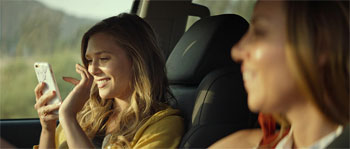 Question: Where did you shoot Ingrid Goes West and what were some of the biggest challenges?
Question: Where did you shoot Ingrid Goes West and what were some of the biggest challenges? Matt Spicer: We shot mostly in Venice and Santa Monica, in keeping with the script. We didn't cheat that much " a couple of scenes were fudged in Los Feliz and Silver Lake, but only people who live in L.A. will notice I think. We tried to be as authentic as possible in terms of our locations. For the Joshua Tree scenes, we shot in real locations, including Pappy & Harriet's. This was August, the dead of summer, 110 degrees outside in the middle of nowhere. That was its own headache. We also lost a shooting day to a wildfire in Santa Clarita and had to evacuate the set. Shooting in Los Angeles itself was much more challenging than I thought. There are just so many hoops to jump through, especially in Venice. People are savvy " it's not like you're shooting a movie in Illinois where everyone is excited to have a film crew around. In Venice, most people are annoyed that you're in their way or your trucks are blocking their parking spot. And they know every statute in Los Angeles. They know the laws. We were shooting at this house in Venice and a neighbor across the street opened his garage door and started sawing wood while we were shooting. He made us pay him to be quiet so we could finish the scene.
Ingrid Goes West
Release Date: October 26th, 2017
Trailer
MORE





